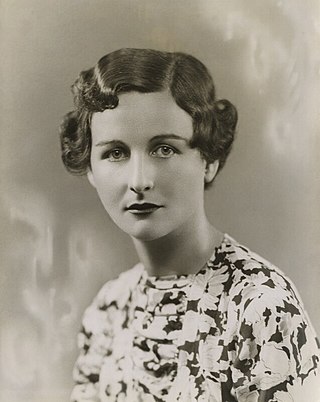
Nancy Freeman-Mitford, known as Nancy Mitford, was an English novelist, biographer, and journalist. The eldest of the Mitford sisters, she was regarded as one of the "bright young things" on the London social scene in the inter-war period. She wrote several novels about upper-class life in England and France, and is considered a sharp and often provocative wit. She also has a reputation as a writer of popular historical biographies.

Jessica Lucy "Decca" Treuhaft was an English author, one of the six aristocratic Mitford sisters noted for their sharply conflicting politics.
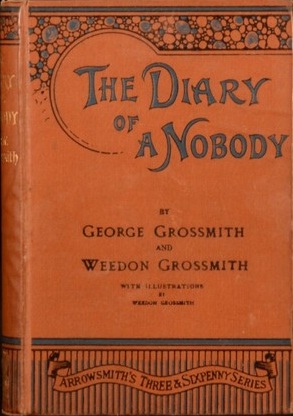
The Diary of a Nobody is an English comic novel written by the brothers George and Weedon Grossmith, with illustrations by the latter. It originated as an intermittent serial in Punch magazine in 1888–89 and first appeared in book form, with extended text and added illustrations, in 1892. The Diary records the daily events in the lives of a London clerk, Charles Pooter, his wife Carrie, his son William Lupin, and numerous friends and acquaintances over a period of 15 months.

Snob is a pejorative term for a person who feels is superior due to their social class, education level, or social status in general; sometimes used specially when they pretend to belong to these classes. The word snobbery came into use for the first time in England during the 1820s.
Julian Maclaren-Ross was a British novelist, short-story writer, memoirist, screenwriter, and literary critic.

Hamish Hamilton Limited was a British book publishing house, founded in 1931 eponymously by the half-Scot half-American Jamie Hamilton. Jamie Hamilton was often referred to as Hamish Hamilton.
Noblesse oblige is a French phrase meaning "nobility obliges".
Alan Strode Campbell Ross was a British academic specialising in linguistics. He is best remembered as the ultimate source and inspiration for author Nancy Mitford's "U and non-U" forms of behaviour and language usage as class indicators.
Christopher Hugh Sykes was an English writer. Born into the northern English landowning Sykes family of Sledmere, he was the second son of the diplomat Sir Mark Sykes (1879–1919), and his wife, Edith. His sister was Angela Sykes, the sculptor. His politician uncle, also Christopher Sykes, was, for a time, a close friend of Edward VII.
The social structure of the United Kingdom has historically been highly influenced by the concept of social class, which continues to affect British society today. British society, like its European neighbours and most societies in world history, was traditionally divided hierarchically within a system that involved the hereditary transmission of occupation, social status and political influence. Since the advent of industrialisation, this system has been in a constant state of revision, and new factors other than birth are now a greater part of creating identity in Britain.
Combe Florey House in Combe Florey, Somerset, England is a country house dating from the early 18th century. It replaced an Elizabethan manor house which was pulled down after the English Civil War. The gatehouse to the original manor survives. In the mid-20th century, the house was home to the writer Evelyn Waugh who died there in 1966 and is buried next to the churchyard of the adjacent Church of St Peter & St Paul. Combe Florey House is a Grade II listed building.

Horizon: A Review of Literature and Art was a literary magazine published in London, UK, between December 1939 and January 1950. Published every four weeks, it was edited by Cyril Connolly, who made it into a platform for a wide range of distinguished and emerging writers. It had a print run of 120 issues or 20 volumes.

Noblesse Oblige: An Enquiry Into the Identifiable Characteristics of the English Aristocracy (1956) is a book illustrated by Osbert Lancaster, caricaturist of English manners, and published by Hamish Hamilton. The anthology comprises four brief essays by Nancy Mitford, Alan S. C. Ross, "Strix" and Christopher Sykes, a letter by Evelyn Waugh, and a poem by John Betjeman.

Don't Tell Alfred is a novel by Nancy Mitford, first published in 1960 by Hamish Hamilton. It is the third in a trilogy centred on an upper-class English family and takes place twenty years after the events of The Pursuit of Love and Love in a Cold Climate. It was Mitford's final novel, though she continued to produce works of biography for a number of years before her death in 1973.

The Bright Young Things, or Bright Young People, was a term given by the tabloid press to a group of Bohemian young aristocrats and socialites in 1920s London. They threw flamboyant fancy dress parties, went on elaborate treasure hunts through nighttime London, and some drank heavily or used illicit drugs — all of which was enthusiastically covered by journalists such as Charles Graves and Tom Driberg.
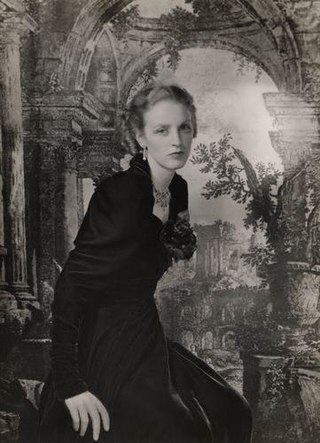
Lady Margaret Pansy Felicia Lamb, known as Lady Pansy Lamb was an English writer under her maiden name of Pansy Pakenham. A novelist, biographer, and translator of French poetry, she was the wife of the Australian-born painter Henry Lamb.
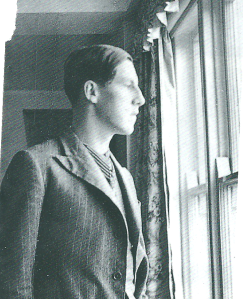
James Alexander Wedderburn "Hamish" St. Clair-Erskine was an English aristocrat aesthete. He was engaged to Nancy Mitford.
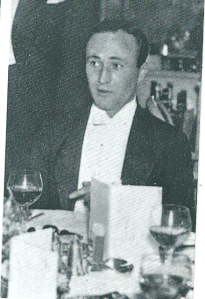
Charles Randolph Mark Ogilvie-Grant was a British diplomat and a botanist and one of the earliest members of the Bright Young Things. Despite his earliest frivolous past, he became a hero during the 1940–1941 Greek campaign.

William Hamilton Mitchell Acton was an Anglo-Italian painter.
Piers Court is a country house in Stinchcombe on the Cotswold Edge in Gloucestershire, England. A Grade II* listed building, in the mid-20th century the court was home to the novelist Evelyn Waugh.












